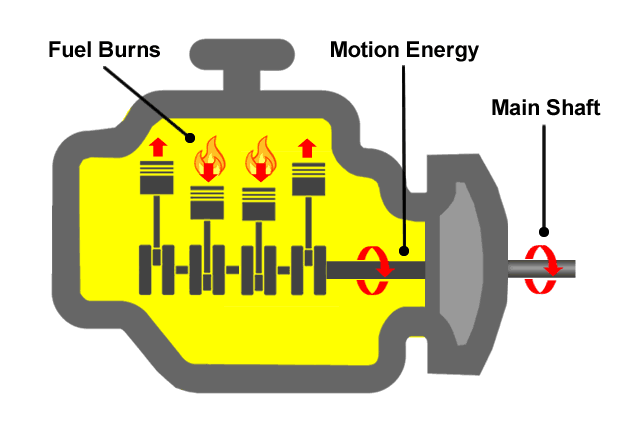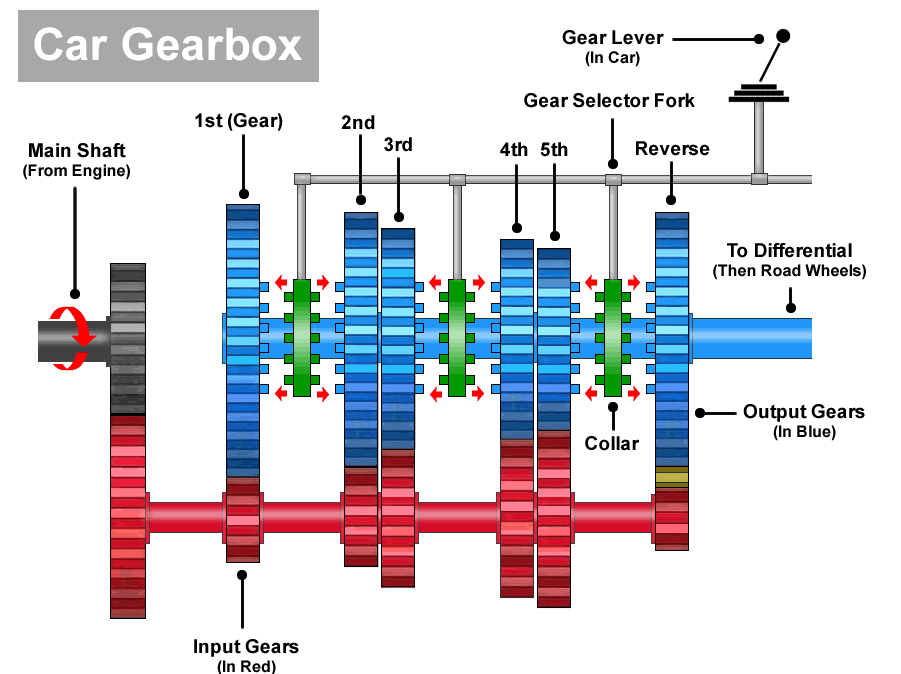Why Are Gears Used in Cars
When learning to drive, it’s usually beneficial to gain a little basic understanding on how things work as it can help you operate the controls. Here, we’ll take a look at why gears are used in cars.
The Car Engine
The car engine burns fuel (chemical energy) and converts this energy into motion (kinetic energy) which rotates the main shaft that ultimately turn the road wheels. When the engine is switched on, it’s speed is measured in revolutions per minute or ‘RPM’.
When the engine is idling, the RPM is between 600 to 1000 RPM. When the accelerator pedal is pressed, more fuel is burned which in turn produces more kinetic energy. This makes the engine run faster, anything up to around 5000 RPM or more.

Car Gears
The power, or force that the engine produces is called ‘torque’ and the gearbox allows us to alter the amount of torque in relation to the speed at which the road wheels rotate. Let’s think of a standard 5 speed manual transmission (gearbox). We have the low gears (1st gear for lowest road wheel speed but the greatest torque), going up to the highest gear (5th gear for highest road wheel speed but the least torque).
Cars are very heavy, so if the spinning main shaft coming from the engine was connected directly to the road wheels, it would be very difficult to move the car away from a stationary position and the engine would almost certainly stall. In fact, if the main shaft from the engine was connected directly to the road wheels, this would be the equivalent of a permanent 4th gear which would make moving off very difficult.
To help prevent engine stall, we need two things; a clutch (which we wont get into now) and low gears which allows us to convert the high speed of the engine to a low speed at the road wheels.
Inside the gearbox are cogs connected to other cogs which make up gear ratios. ‘Input gears’ are the cogs that are connected to the power source (the engine) and ‘output gears’ are the cogs driven by the input gears.

When different sized gears connect together, they spin at different speeds and deliver different amounts of power.
For example, an input gear with 10 teeth that’s connected to a larger output gear with 20 teeth means the output gear will spin half the speed of the input gear, generating less speed but more power.
Low Gear
A small input gear that’s connected to a large output gear creates a lot of power, but very little speed and this is called a low gear (1st gear) ideal for moving the car off from a stationary position. Low gears are essential for letting us move off from a stationary position and is one of the main reasons why gears are used in cars.
High Gear
Conversely, a large input gear connected to a small output gear creates little power, but a lot of speed and is called a high gear (5th gear), ideal for high road speeds. A car that is moving has momentum, therefore it doesn’t require a gear that has much power. High gears such as 5th or 6th allow the car to move at a faster speed than what the engine would be capable of if it didn’t have gears.
Ultimately the reason why gears are used in cars is so that we can combine engine speed (RPM) with the correct amount of power (torque) to complete an objective such as moving off or traveling at high speeds.